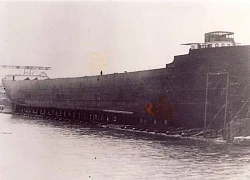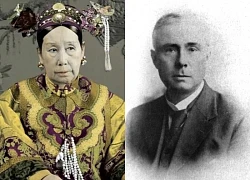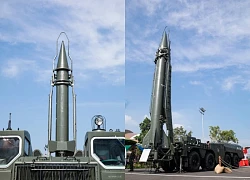Mystery under the sea: The road 'across the ocean', connecting tense relationships
The cold bottom of the English Sea is feverish when it contains an extraordinary technical feat that heals the strained relationship between the two countries. Overcoming many geological and political difficulties, this century's work marks a remarkable evolution of humans.
On May 6, 1994, in a grand ceremony held at both ends of the tunnel, Queen Elizabeth II of the United Kingdom and French President François Mitterrand jointly cut the ribbon to inaugurate the English Channel Tunnel - one of the greatest engineering works of the 20th century.
Under the sea between the two nations that have been at odds for centuries, a new symbol of peace, cooperation and technological power has been born: a tunnel more than 50km long, of which nearly 38km runs through the bottom of the English Sea.
This building is not only a feat of construction, but also a testament to the ability of modern man to overcome all geographical, political, and technical limitations.
In fact, the French have been proposing a plan to dig undersea tunnels since 1802. For decades, however, political, financial, and technological barriers have made the idea a pipe dream.
It was not until the 1980s, when relations between the two countries were improving and modern construction technology reached new heights, that the Channel Tunnel project was officially launched.
The project was carried out by an international corporation with the participation of tens of thousands of engineers, workers, geologists and experts from all over Europe. The project was started in 1988 and lasted for six years at an initial cost estimated at £4.65 billion, but in fact cost more than £9 billion, making it one of the most expensive construction projects in history at the time.
The Channel Tunnel is not a single tunnel, but a system of three separate tunnels: two main tunnels for passenger and cargo ships, and a smaller central tunnel for maintenance and emergency exit purposes.
The tunnels were dug by giant drilling machines, each weighing hundreds of tons, capable of penetrating many complex geological layers on the seabed. The geology in this area is particularly suitable for construction – a thick, stable and less permeable layer of shale – which is key to the success of the project.
When the tunnel was put into operation, it immediately revolutionized travel between Britain and continental Europe. In the past, passengers and cargo had to rely entirely on ferries across the English Channel, which were easily affected by the weather and took many hours to complete the journey.
Now, with the Eurostar train system running through the tunnel at speeds of up to 300 km/h, passengers can travel from London to Paris in just over two hours - faster than a flight if check-in time is included.
Not only that, the English Tunnel also has a far-reaching influence on many fields: economy, politics, tourism, and even cultural awareness. Economically, it has expanded trade opportunities between the UK and Europe, increased freight traffic, and supported cross-border supply chains.
Politically, the project is a symbol of European integration, especially in the context that Britain was an active member of the European Union at that time. In terms of culture, the Channel Tunnel contributes to erasing the traditional British sense of "separation" from the continent, promoting unprecedented cultural exchange and tourism.
However, it is impossible not to mention the challenges that this project has faced. In addition to the funding team, the project has also been criticized for affecting the marine ecological environment, raising concerns about border security, and even about the risk of undersea fires.
In fact, a number of fires and technical glitches occurred in the years that followed, forcing operators to establish extremely strict safety control procedures. In addition, in the context of Brexit, the tunnel also faces new legal and regulatory challenges when the UK officially leaves the European Union.
However, more than three decades after its inauguration, the English Channel Tunnel is still a great achievement. Not only is it a physical work, it is also a symbol of the ability to overcome any barriers – not only technically, but also psychologically, historically and politically.
In an increasingly polarized and volatile world, looking back at a connectivity project like the Channel Tunnel is also a reminder of the great potential when people work together towards a common goal.
At the present time, when the Eurostar train soars through the depths of the sea, carrying thousands of passengers every day, few people remember millions of hours of labor, billions of dollars in investment, and hundreds of seemingly insurmountable challenges.
But that is what makes the true value of the project: not just a tunnel, but a vivid demonstration of the desire to conquer nature and go beyond human limits. That is the Channel Tunnel - an immortal symbol of human wisdom and will.
The Vietnamese team waits for coach Troussier's new version 2.0  Cương Bá13:40:21 14/03/2024Coach Troussier has plans to upgrade the Vietnamese team to become a better version with fewer mistakes and wiser in the match against Indonesia in the 2026 World Cup qualifiers.
Cương Bá13:40:21 14/03/2024Coach Troussier has plans to upgrade the Vietnamese team to become a better version with fewer mistakes and wiser in the match against Indonesia in the 2026 World Cup qualifiers.











 The ship that disappeared in 1913 suddenly appeared, revealing the "mysterious" truth deep under Lake Huron
The ship that disappeared in 1913 suddenly appeared, revealing the "mysterious" truth deep under Lake Huron Vietnam in the lunar eclipse 'hunting' zone, 102 opportunities to see the beauty of the sky
Vietnam in the lunar eclipse 'hunting' zone, 102 opportunities to see the beauty of the sky The mystery of the dirtiest man in the world, who died just after the first shower
The mystery of the dirtiest man in the world, who died just after the first shower Empress Dowager Tu Xi suspected that she had 3 lovers, 1 foreigner, who were the other 2?
Empress Dowager Tu Xi suspected that she had 3 lovers, 1 foreigner, who were the other 2? Scud-B ballistic missile causes a stir at the September 2nd military parade: Over 34 tons, maximum range 300km
Scud-B ballistic missile causes a stir at the September 2nd military parade: Over 34 tons, maximum range 300km China: 'Giant straw' pierces from the sky to the ground, revealing a chilling secret!
China: 'Giant straw' pierces from the sky to the ground, revealing a chilling secret! Mystery of the Bermuda Triangle: Discovery of "rogue waves", explaining a series of disappearances
Mystery of the Bermuda Triangle: Discovery of "rogue waves", explaining a series of disappearances What is MMA that helps a girl defeat a tattooed young man in a split second?
What is MMA that helps a girl defeat a tattooed young man in a split second? The secret bedroom of Empress Dowager Cixi, the most powerful but with a debauched love "drama"
The secret bedroom of Empress Dowager Cixi, the most powerful but with a debauched love "drama"
2 | 0 Discuss | Report